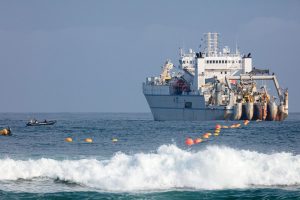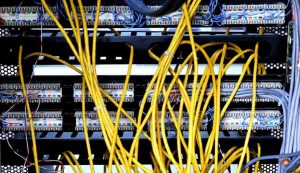Fiber Optic Cables vs Insulated Ordinary Cables: What’s the Difference?
When it comes to cables, the disparity may not always be clear. That’s why, in this article, we’ll unravel the variety of facets differentiating fiber optic cables from ordinary cables.
About Fiber Optic Cable
Fiber optic cables consist of glass fibers, which can transmit information using light. Due to their speed and reliability, these cables are the bedrock for most modern telecom and internet infrastructure.
Some might ask, “What makes them so special?”
Good question!

Advantages of Fiber Optic Cables
Fiber optic cables have the ability to transmit data over long distances without any signal loss, thanks to their glass core.
They are also more secure, as it’s tough to intercept data from these cables.
Moreover, they can handle a larger bandwidth, becoming the go-to choice for high-end internet connections.
- Greater Bandwidth and Speed
Optical fiber supports extremely high bandwidth and speed, its biggest advantage is that each fiber can transmit a large amount of information. - Low Cost
The most basic raw material for manufacturing glass optical fiber is silica, i.e. sand.
Sand is almost inexhaustible in nature, so its potential cost is relatively low. - Finer and Lighter
Fiber optics are finer and can be drawn into smaller diameters than copper wire.
Compared with similar copper wires, optical fiber is smaller and lighter, making it more suitable for places with limited space. - Higher Carrying Capacity
Since optical fibers are much thinner than copper wires, it is possible to bundle more fibers into a cable of a specific diameter.
This also allows optical fiber to carry a higher communication capacity. - Low Signal Attenuation
Signal loss in optical fiber is less than in copper wire. - Strong Anti-Interference Ability
The basic component of optical fiber is quartz, which only transmits light, does not conduct electricity, and is not subject to the role of electromagnetic fields, in which the transmission of light signals is not affected by electromagnetic fields, so fiber optic transmission of electromagnetic interference, industrial interference has a strong ability to resist. - Long Service Life
The life cycle of optical fiber is usually longer, generally more than 100 years.
About Submarine Fiber Optic Cable
There is another type of fiber optic cable that you may not see often in your daily life, yet it appears in every aspect of our lives. That is the submarine fiber optic cable.
Ever wondered, “How does the internet reach remote islands?” You guessed it; it’s through submarine fiber optic cables.
Submarine fiber optic cables extend across oceans and seas, connecting different parts of the world with the internet. Resilient to the harsh underwater environment, these cables provide high-speed, reliable internet connectivity worldwide.
Prospects for the development of Submarine Fiber Cable
The development of submarine fiber optic cable shows the progress of modern information technology. And it is a more difficult project within the cable industry because it requires a certain degree of specialization in both laying and maintenance.
Even so, the prospects for the development of submarine fiber optic cable are also very broad.
As the global digital economy is booming, high-traffic users are accelerating the penetration of digital applications is also driving the rising demand for data centers. Data traffic is also growing exponentially, driving rapid growth in international bandwidth.
The development of digital intelligence in typical industries such as the oil and gas industry and ocean observation is gradually generating new demand for submarine cable construction.
The generational transition of submarine cables has brought about a new round of submarine cable construction boom.
Many countries have introduced policies or strategies to regulate the submarine cable construction process, optimize the development environment, and promote the layout of submarine cable construction.
In 2023-2028, submarine fiber optic cable will continue to maintain high growth.
About Ordinary Cable
Ordinary cables or insulated cables are copper, aluminum, or other metal wires insulated with plastic or rubber.
This insulation shields the wire from physical damage and electromagnetic interference.
While they are cheaper and easier to install than fiber optic cables, ordinary cables can’t match their speed, security, and signal strength over long distances.
This limitation restricts their use in advanced applications like high-speed internet, but they still retain a significant market share in traditional electrical and telecommunication sectors.
Taking a closer look at cable types helps us understand why some are preferred over others.
Fiber optic cables may be single-mode or multimode, offering tremendous data speed and capacity. However, their high cost, delicate handling, and complex installation process restrict their broader adoption.
On the other hand, ordinary cables like coaxial, Ethernet, and telephone cables score in terms of cost-effectiveness, easy installation, and serviceability, and are predominantly used in household, commercial, and industrial settings.

The future of fiber optic cables
The emergence of breakthrough technologies like 5G, IoT, AI, and more, necessitates rapid communication. Fiber optic cables fit perfectly into this narrative with their high-speed data transfer capability.
However, ordinary cables are not going extinct anytime soon. Their cheap and resilient nature makes them useful for a wide range of applications.
So, the cables’ future, will it be fiber optic or ordinary cables? Well, they will likely exist side-by-side, complementing each other in different applications.
To sum it up, the differences between fiber optic cables and ordinary cables are immense, with each exhibiting unique capabilities and limitations. As technology advances, we anticipate continual evolution and refinement in cable technology to accommodate our growing dependence on the digital world.